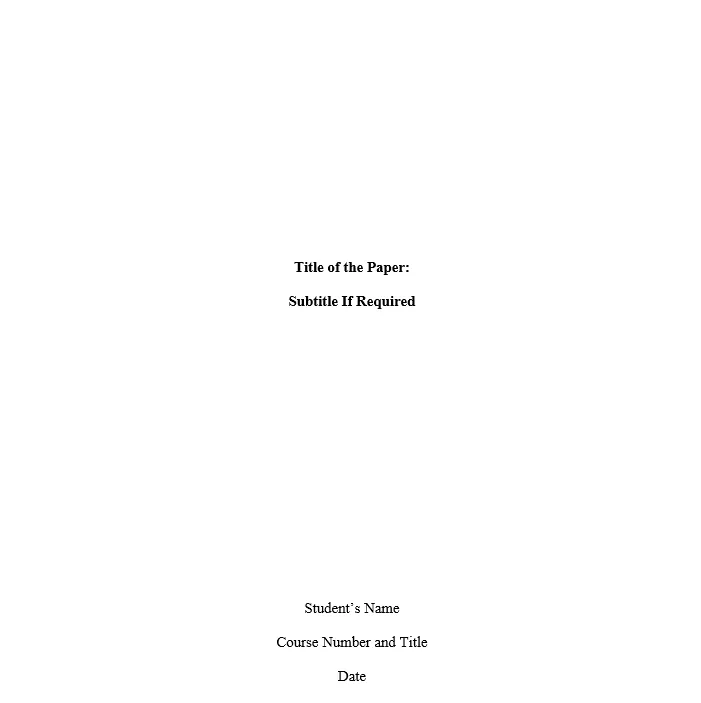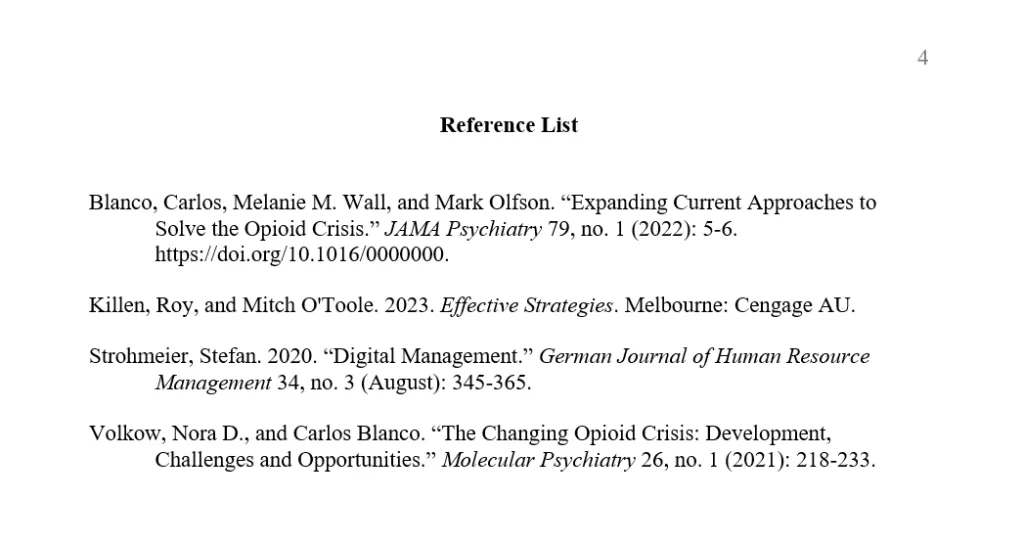Turabian (Author-Date) Citation Style Guide (9th ed.)
This piece of content has been developed by IvyPanda's editorial team.
No AI was involved in the creation process; only qualified experts contributed.
The information, facts, and sources presented in the text have been carefully checked and verified.
You are free to use it with proper referencing.
The Turabian style manual is considered to derive from The Chicago Manual of Style that is often used by students for formatting their papers. We adapted both variants of The Chicago Manual of Style (Author-Date and Notes-Bibliography) to meet students’ needs when they are expected to write many different papers during their college life. Thus, Turabian is significantly shorter and less complicated than the Chicago style. This guide is developed by experienced professionals who have worked with different formats, and it will help you understand and use Turabian (Author-Date) correctly.
This guide is developed in line with Turabian, Kate L. 2018. A Manual for Writers of Research Papers, Theses, and Dissertations: Chicago Style for Students and Researchers. 9th ed. Chicago: University of Chicago Press.
What is Turabian Citation Style?
The Turabian style is developed directly for students, and its Author-Date version is asked by instructors when it is necessary to mention authors, dates of publication, and page numbers right in the sentence where a certain source is cited. If you need to write an academic paper using this format, its Author-Date version is highly applicable.
The Importance of Citing and Referencing
Correct referencing is critical for students since it is a key solution to avoiding plagiarism:
- Students’ knowledge and experience usually do not allow them to refer to only their own views and ideas while writing research papers and essays. Referring to scholars’ papers is a requirement in academic settings, and it is important to do this effectively and correctly.
- Schools, colleges, and universities forbid plagiarism. Effective referencing and citing are important steps in preventing plagiarism and emphasizing the academic quality of a student’s research paper.
- Students need to ensure that their cited data come from credible, reliable, and unbiased sources. In this context, the use of trustworthy peer-reviewed journal articles is generally expected.
- References should be formatted correctly, following the principles of certain citation styles, and links (if used) must be working.
General Principles of Turabian Style Formatting
- Set 1″ (2.54 cm) margins on all sides while following the Turabian style.
- Use Times New Roman 12 pt. font, double-spaced (unless your instructor says otherwise).
- A list of the sources cited in the paper according to the Turabian AD style should appear in a separate section at the end of the paper that is titled Reference List.
- All words except for articles and prepositions should be capitalized in book, article, and periodical titles.
- Reference entries are single-spaced, separated by an additional line space.
- Alphabetize the sources on the reference list by the last names of the authors (or, if no author or editor is given, by the title or, failing that, a descriptive phrase).
- For successive entries by the same author(s), translator(s), editor(s), or compiler(s), a 3-em dash replaces the name(s) after the first appearance.
Turabian Title Page
- The title of the paper should be placed in the center of the page and written in bold. A colon is used to separate the main title from the subtitle. The subtitle is written below the title.
- The student’s name, course number and title, and date should be written in the lower part of the page.
- Page numbers are not used on the title page and on the table of contents/outline page.

Turabian (Author-Date) Table of Contents
A table of contents is used in Turabian NB papers. This page should be labeled Contents. Leave two blank lines between the page title and the first item in the list. Items should be single-spaced, but do not forget to add a blank line after items indicating chapters or parts of the paper.

Turabian Headings and Subheadings
Level 1: Centered, Bold, Each Word is Capitalized
Level 2: Centered, Capitalized
Level 3: Flush Left, Bold, Capitalized
Level 4: Flush left, regular font, sentence case
Level 5: Placed at the beginning of the paragraph. Can be italicized or bold, sentence case. A period is used to separate the subheading and the rest of the text in the paragraph.
Turabian Reference List
- Reference List is inserted at the end of the paper.
- Add two blank lines after the page title.
- Entries are single-spaced, and a blank line is added after each entry.
- Indent all lines after the first line in the entry (hanging indent, 1.27 cm).
- The reference list is always alphabetized by the first word in the reference entry.
- When alphabetizing titles or group names as authors, go by the first significant word (disregard a, an, the).
- In sources’ titles in the text and on a reference page, all notional words should be capitalized.

Turabian AD Style References
Turabian Book Citation
One author
Author’s Last Name, First Name. Year of Publication. Title of the Book. Publisher’s Location: Publisher’s Name.
Black, Beth. 2022. Professional Nursing: Concepts & Challenges. New York: Elsevier Health Sciences.
Two or three authors
Author’s Last Name, First Name, First Name Last Name, and First Name Last Name. Year of Publication. Title of the Book. Publisher’s Location: Publisher’s Name.
Hockenberry, Marilyn J., David Wilson, and Cheryl C. Rodgers. 2021. Wong’s Essentials of Pediatric Nursing. New York: Elsevier Health Sciences.
Four or more authors
Author’s Last Name, First Name, First Name Last Name, First Name Last Name, First Name Last Name, First Name Last Name, First Name Last Name, First Name Last Name, First Name Last Name, First Name Last Name, First Name Last Name et al. Year of Publication. Title of the Book. Publisher’s Location: Publisher’s Name.
Potter, Patricia A., Anne G. Perry, Patricia A. Stockert, and Amy Hall. 2021. Fundamentals of nursing. New York: Elsevier.
List the names of the first ten authors and then add “et al.”
Corporate author
Organization Name. Year of Publication. Title of the Book. Publisher’s Location: Publisher’s Name.
World Health Organization. 2021. Violence Against Women Prevalence Estimates, 2018. Geneva: World Health Organization.
No author
Title of the Book. Year of Publication. Publisher’s Location: Publisher’s Name.
Mythology: Myths, Legends and Fantasies. 2023. Croydon: Aurora Metro Books.
Multiple works by the same author
Fromm, Erich. 2021. The Anatomy of Human Destructiveness. Harmondsworth: Penguin Books.
—. 2023. The Fear of Freedom. London: Routledge & Kegan Paul.
A 3-em dash and period are used to replace the author’s name in every subsequent reference entry.
Multiple works published in the same year by the same author
Brodsky, Joseph. 2021a. Less than One: Selected Essays. London: Penguin Press.
—. 2021b. On Grief And Reason: Essays. London: Penguin Press.
- The works are arranged in alphabetical order by title.
- The letters “a,” “b,” “c,” etc. follow the year of publication in each entry.
Edition other than first
Author’s Last Name, First Name. Year of Publication. Title of the Book. # ed. Publisher’s Location: Publisher’s Name.
Chang, Esther, and Deborah Hatcher. 2024. Transitions in Nursing: Preparing for Professional Practice. 6th ed. New York: Elsevier Health Sciences.
An edited book with no author
Editor’s Last Name, First Name, ed. Year of Publication. Title of the Book. Publisher’s Location: Publisher’s Name.
Johnson, Elsa D., ed. 2023. Management Principles. 4th ed. London: Routledge.
Multivolume works
Author’s Last Name, First Name. Years of Publication. Title of the Book. # vols. Publisher’s Location: Publisher’s Name.
Harnack, Adolf. 2020. History of Dogma. Vol. 1. Eugene: Wipf and Stock Publishers.
Harnack, Adolf. 2020-21. History of Dogma. 2 vols. Eugene: Wipf and Stock Publishers.
A translated book
Author’s Last Name, First Name. Years of Publication. Title of the Book. Translated and edited by Editor/Translator’s First Name Last Name. Publisher’s Location: Publisher’s Name.
Dostoyevsky, Fyodor. 2023. The Idiot. Translated and edited by Alan Myers. Oxford: Oxford University Press.
Encyclopedia/dictionary
Editor’s Last Name, First Name, ed. Year of Publication. Title of the Book. Publisher’s Location: Publisher’s Name.
Swators, William H., Peter Kivisto, Barbara J. Denison, and James McClennon, eds. 2024. Encyclopedia of Religion and Society. Walnut Creek: AltaMira Press.
Chapter in an edited book
Author’s Last Name, First Name. Years of Publication. “Chapter Title.” In Book Title, edited by Editor’s First Name Last Name, pages–pages. Publisher’s Location: Publisher’s Name.
Yazıcı, Yasemin Erkan. 2023. “Conspiracy Theories at the Prague Cemetery.” In Architecture in Contemporary Literature, edited by Nevnihal Erdoğan and Hikmet Temel Akarsu, 102-112. Dubai: Bentham Science Publishers.
E-book / Online Book
Author’s Last Name, First Name. Year of Publication. Title of the Book. Publisher’s Location: Publisher’s Name. E-book Format.
Author’s Last Name, First Name. Year of Publication. Title of the Book. Publisher’s Location: Publisher’s Name. E-library Name.
Author’s Last Name, First Name. Year of Publication. Title of the Book. Publisher’s Location: Publisher’s Name. URL.
Jones, Rodney H. 2024. Discourse Analysis: A Resource Book for Students. New York: Taylor & Francis. EPUB.
Borel, Brooke. 2024. The Chicago Guide to Fact-Checking. Chicago: University of Chicago Press. ProQuest Ebrary.
Tolkien, John Ronald Reuel. 2024. The Hobbit or There and Back Again. New York: Harper Collins. https://www.readanybook.com/ebook/the-hobbit-17.
Turabian Article Citation
Journal article in print
Author’s Last Name, First Name. Year of Publication. “Title of the Article.” Full Title of the Journal volume number, no. issue number (Month/Season): page numbers.
Sullivan, Virginia, Vickie Hughes, and Debra Rose Wilson. 2022. “Nursing Burnout and Its Impact on Health.” Nursing Clinics 57, no. 1: 153-169.
Chen, Chiahui, and Scott T. Meier. 2021. “Burnout and Depression in Nurses: A Systematic Review and Meta-Analysis.” International Journal of Nursing Studies 124, no. 1 (December): 1-12.
Garg, Swati, Shuchi Sinha, Arpan Kumar Kar, and Mauricio Mani. 2022. “A Review of Machine Learning Applications in Human Resource Management.” International Journal of Productivity and Performance Management, no. 5 (May): 1590-1610.
- If there is no volume but only an issue, write “no.” before the issue and separate the journal title and the issue number with a comma.
- If Month/Season is known, include it in brackets after the issue number.
Online journal article
Author’s Last Name, First Name. Year of Publication. “Title of the Article.” Full Title of the Journal volume number, no. issue number (Month/Season): page numbers. DOI/URL.
Singh, Anjali, Weng Marc Lim, Sumi Jha, Satish Kumar, and Maria Vincenza Ciasullo. 2023. “The State of the Art of Strategic Leadership.” Journal of Business Research 158, no. 1 (Spring): 1-12. https://doi.org/10.1016/j.jbusres.2023.113676.
Newspaper and magazine articles in print
Author’s Last Name, First Name. Year of Publication. “Title of the Article.” Full Title of the Newspaper/Magazine, Month Date, Year, page numbers (if known).
Chavkin, Sasha, Caitlin Gilbert, Anjali Tsui, and Anahad O’Connor. 2024. “As Obesity Rises, Big Food and Dietitians Push ‘Anti-Diet’ Advice.” The Washington Post, April 3, 2024, 12-14.
The Washington Post. 2024. “Should I Take a Multivitamin? Here’s What the Science Says.” April 1, 2024.
- Page numbers may be omitted.
- If there is no author, the magazine/newspaper title stands for the author.
Online newspaper and magazine articles
Author’s Last Name, First Name. Year of Publication. “Title of the Article.” Full Title of the Newspaper/Magazine, Month Date, Year. URL.
Farivar, Cyrus. 2024. “How TikTok Shop Became the Internet’s Favorite New Dollar Store.” Forbes, April 4, 2024. https://www.forbes.com/sites/cyrusfarivar/2024/04/04/how-tiktok-shop-became-the-internets-favorite-new-dollar-store/?sh=26df9155676b.
Turabian Conference Citation
Conference proceedings/presentations
Author’s Last Name, First Name. Year of Publication. “Title of the Paper.” Paper presented at Conference, City, State/Country, Month Date(s).
Johns, Anastasia. 2024. “The Principles of Historical Factual Analysis.” Paper presented at the International Conference, Athens, Greece, May 12-23.
Turabian Dissertation Citation
Thesis or dissertation
Author’s Last Name, First Name. Year of Publication. “Title of the Paper.” Degree statement, University.
French-Nelson, Kerri. 2023. “Bridging Support: Examining the Effectiveness of Online Peer Mentors in an Adult Learner Precollege Program.” PhD diss., Middle Tennessee State University.
Turabian Lecture Citation
Lecture/presentation
Author’s Last Name, First Name. Year of Publication. “Title of the Paper.” Lecture/Presentation, University, Location, Month Date, Year.
Anderson, Feya. 2024. “The Key Idea of Organizational Management.” Lecture, the University of Virginia, Charlottesville, April 10, 2024.
Turabian Website Citation
Website page
Author’s Last Name, First Name. Year. “Title of the Page.” Name of the Website. Accessed Month Date, Year. URL.
WHO. 2024. “Home Page.” World Health Organization. Accessed June 18, 2024. http://www.who.int/en/.
Website (no date)
Organization Name. n.d. Name of the Website. Accessed Month Date, Year. URL.
WHO. n.d. “Website Map.” World Health Organization. Accessed June 18, 2024. http://www.who.int/en/.
Website, no author
Organization Name. Year. “Title of the Page.” Name of the Website. Last modified Month Year/ Accessed Month Date, Year. URL.
Yahoo. 2023. “Welcome to the Yahoo Privacy Policy.” Yahoo.com. Last modified July 1, 2023. https://legal.yahoo.com/us/en/yahoo/privacy/index.html.
- Use a website/organization name as the author.
- Add the “last modified” or “accessed” date.
Blog
Author’s Last Name, First Name. Year. “Title of the Post.” Name of the Blog (blog). Month Date, Year. URL.
Mosunic, Chris. 2024. “Why Is Anxiety More Common in Women? Plus, 8 Tips to Cope.” Calm (blog), March 25, 2024. https://www.calm.com/blog/women-anxiety.
- You may add “(blog)” after the blog name to indicate the source type.
- The blog name should be typed in italics.
Social media
Author’s Last Name, First Name (nickname). Year. “Title of the Post.” Name of Social Media, Month Date, Year of access. URL.
APA Style. 2021. “A New Way to Master APA Style Is Here!” Facebook, September 1, 2021, https://www.facebook.com/APAStyle/posts/6734360253256004.
Souza, Pete (@petesouza). 2024. “Nine years ago today.” Instagram photo, March 13, 2024. https://www.instagram.com/petesouza/p/C4c7tqPrNcU/.
YouTube
Author’s Last Name, First Name. Year. “Title of the Video.” Month Date, Year. YouTube video, Length. URL.
Accounting Stuff. 2021. “Learn Accounting in Under 5 Hours.” April 14, 2024. YouTube video, 4:50:58. https://www.youtube.com/watch?v=gPBhGkBN30s.
Video/film
Last Name, First Name, director. Year of Production. Title of the Video. Company, DVD.
Fabian, Anthony, director. 2022. Mrs. Harris Goes to Paris. Focus Features, DVD.
Turabian Style In-Text Citation
Books: one author
Management principles require discussion and understanding to be effectively applied at work (Jones 2024).
No comma is used between the name and the date, but page number (required for quotations) is separated by a comma: (Jones 2024, 34).
Two or three authors
“Morality, it could be argued, represents the way that people would like the world to work — whereas economics represents how it actually does work” (Levitt and Dubner 2023, 11).
- All authors are listed after the citation in the same order as in the references list.
- “And” is used to separate two and three authors.
More than three authors
HRM should be the focus of modern organizations (Black et al. 2022).
List only the first author followed by et al.
Chapter in an edited book
Applicability of school education is currently a priority among educators (Savery 2024).
Mention the name of the chapter’s author.
Multiple sources
The history of organizational management requires further discussion (Chang 2021; Smith 2020; Wright 2023).
If more than one source is cited in the same sentence, list them alphabetically and separate with a semicolon.
Different authors with same surnames
Globalization is credited for fueling the off-shore practices (H. Lewis 2021). However, according to D. Lewis (2022), its impact on diversification of markets is often overlooked in this context.
Use initials before last names to distinguish between the authors.
Same year/same author
(Garris 2021a; Garris 2021b).
If an author has more than one publication in one year, write the author’s last name followed by the date and a corresponding letter from the references list.
Source with no date
(Jones n.d.).
If the date of publication cannot be ascertained, write the author’s last name followed by the comma and “n.d.”
Source quoted in another work
The original work by Einstein contained numerous arithmetical errors (quoted in Aslan 2023).
Scholarly journal article
(Smith et al. 2024).
Newspaper/magazine article
(Dimitros 2023).
Page from a website
(Stephens 2023).
Include the name of the author instead of the name of the resource.
Corporate author
(World Health Organization 2021).
Page with unknown author
(Google 2021).
Use the name of the website in an in-text citation.
Page with unknown date
(World Health Organization n.d.).
Video/film
(Allen 2022).
Lecture/presentation
(Donnerly 2024).
Social media
(APA Style 2021).
(Souza 2024).
Dissertation / thesis
(Darling 2021).
Conference proceedings
(Gentry and Simmons 2021).
Tables and Figures in Turabian Style
Provide figures and tables in the body of a paper after the text that discusses this object. Introduce a figure to a reader by adding a detailed caption with all the information about the figure and its source. Both figures and tables should be numbered. For tables, insert a table number and a title above the object and add “Source:” with detailed information about the table source below it.

Figure 1. Glass World. EnvironmentalScience. Accessed August 18, 2024. https://www.environmentalscience.org/wp-content/uploads/2016/09/NEPA-CEQA-640×425.jpeg.